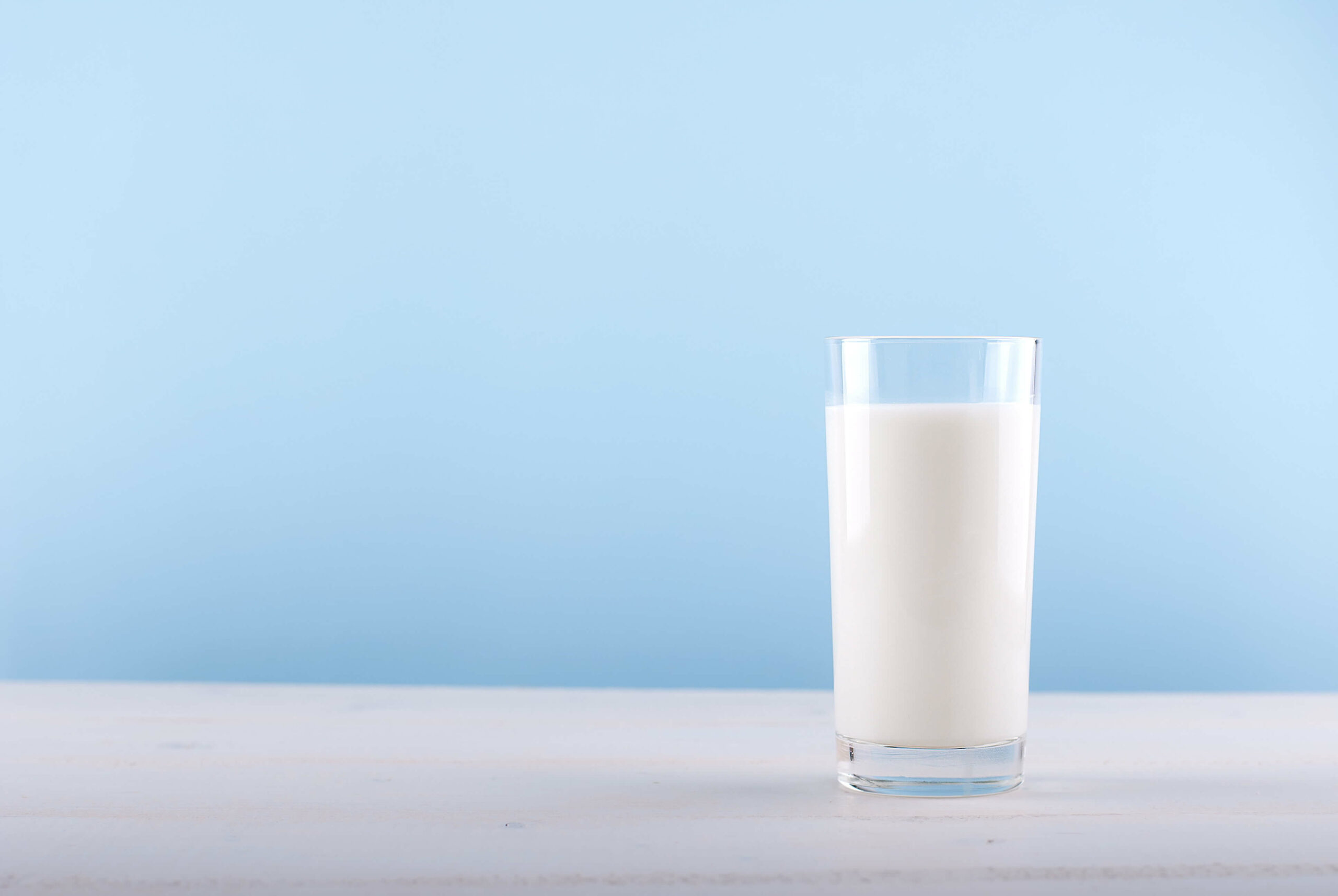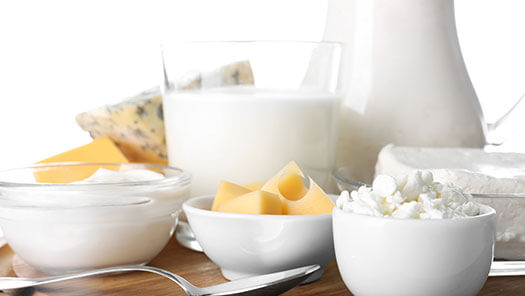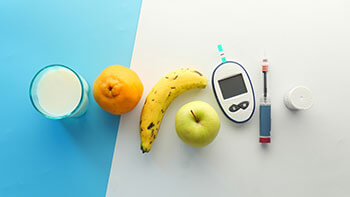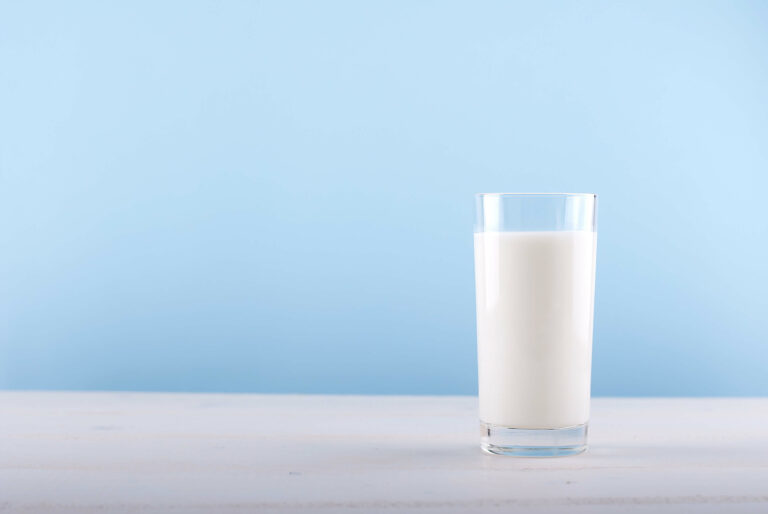Holistic Health Benefits of the Milk Matrix: Beyond Individual Nutrients
For many years, nutrition research focused on how individual nutrients, such as calcium or protein, affect our health.
More recently, scientists began to look at the interplay of nutrients and their collective impact on the human body. There is now more focus on how nutrients work together to provide health benefits. The complex matrix of food is getting more attention, and milk is at the forefront.
What is the milk matrix?
Researchers define a food matrix as “a function of both a food’s structure and its nutrient composition, and how these nutrients interact with each other.”1
People don’t generally eat individual foods or nutrients in isolation. We eat foods grouped together into meals, so it makes sense to study the food matrix in addition to individual nutrients.
The milk matrix explains how protein, vitamins, minerals, carbohydrates and fat in milk can work together to provide nutritional benefits.2 Research shows that the health benefits of milk go beyond individual nutrients. That’s why researchers are looking at the holistic impact of the milk matrix on health outcomes, rather than solely focusing on just one nutrient at a time.3,4
What are some health benefits of the milk matrix?
Studies show that milk is linked to improved heart health, better bone health and a decreased risk of developing colorectal cancer. These benefits are largely thanks to the milk matrix.
Heart health
Studies show neutral or beneficial associations between milk and cardiovascular (CV) health. The Prospective Urban Rural Epidemiology (PURE) study shows an inverse association between milk and all-cause mortality, major CV diseases events, metabolic syndrome (MetS), hypertension and stroke.5
The positive effects are a result of the collective parts of the milk matrix, including:
- Calcium
- Phosphorus
- Potassium
- Bioactive peptides (protein)
- Milk fat globule membrane (MFGM)6,7
Does it matter which kind of milk – skim, 1%, 2% or whole 3.25%? No. Regardless of milk fat levels, each cup of milk contains 15 essential nutrients. Studies show there are benefits from milk with varying levels of milk fat.
When nutrients are examined in isolation, it’s common to hear that whole milk is high in saturated fat. When one nutrient becomes the enemy, we neglect to account for the fact that milk is high in protein, vitamins and minerals, and some saturated fatty acids have health benefits.8
Even though whole milk contains some saturated fat, it still has health benefits thanks to the milk matrix. Many studies suggests that diets with higher whole-fat dairy intake, including milk, are associated with lower risks of cardiovascular disease, heart attack, stroke and mortality.9-16
Bone health
The milk matrix (which extends to other dairy products as well) exerts a positive effect on bones. Though the effects of milk consumption on bone health are not completely clear, it is hypothesized that the milk/dairy matrix contributes to bone health because of the interplay of:17.18
- Calcium
- Calcium phosphate nanoclusters found in casein micelles
- Bioavailability of calcium
- Vitamin D
- Vitamin K2
- High-quality protein
Dairy products are considered one of the best sources of calcium due to their high elemental calcium content, and high absorptive rate. According to Osteoporosis Canada, individuals over 50 years of age should aim to consume three servings of dairy milk or dairy products daily. However, a study published in the Journal of Nutrition found that calcium intake from food and supplemental sources decreased in the Canadian population from 2005 to 2014 and that many Canadians are at risk of inadequate calcium intake.19
Other nutrients in dairy products, such as vitamin D, are also essential to bone health. Vitamin D works as part of the milk matrix and is needed for efficient calcium absorption. Plant-based beverages, however, commonly contain oxalates and phytates, are two anti-nutrients commonly found in plant-based beverages that may hinder calcium absorption.20
Dental health
Milk is also beneficial for dental health due to parts of the milk matrix, including calcium, phosphate and protein.21 These components protect teeth by buffering acids and aiding enamel remineralization. However, these effects are complex and synergistic, and not solely the result of individual components.
To compare, soy beverages with added calcium lack the same enamel mineralization effect as dairy milk, highlighting that nutrients in isolation do not have the same impact on positive health outcomes as the milk matrix.22
Colorectal cancer
Higher milk consumption is linked to a lower risk of developing colorectal cancer.23-25 This is due to various factors of the milk matrix, including:
- High calcium content
- Improved calcium absorption due to casein and lactose in milk
- Lactic acid-producing bacteria26
Additionally, data from the 2019 Global Burden of Disease study highlighted the significant role of dietary factors, including low milk intake, on colorectal cancer incidence and mortality globally.27
The bottom line:
To better understand our health, it’s vital to understand food matrix effects and how nutrients interact. Researchers will continue to explore the milk matrix to learn how its various components affect health outcomes. For now, studies show that components in milk, such as protein and calcium, work together in harmony to protect against colorectal cancer and support heart health and bone health.
CITATIONS
- Thorning TK, et al. (2017). Whole dairy matrix or single nutrients in assessment of health effects: current evidence and knowledge gaps. Am J Clin Nutr. 105(5):1033-1045.
- Mozaffarian D, et al. (2018). History of modern nutrition science—implications for current research, dietary guidelines, and food policy. BMJ. 361:k2392. https://www.bmj.com/content/361/bmj.k2392
- Unger, A. et al. (2023). Harnessing the Magic of the Dairy Matrix for Next-Level Health Solutions: A Summary of a Symposium Presented at Nutrition 2022. Current Developments in Nutrition. 7(7), 100105. https://doi.org/10.1016/j.cdnut.2023.100105
- Mulet-Cabero, A.-I.,et al. (2024). The Dairy Matrix: Its Importance, Definition, and Current Application in the Context of Nutrition and Health. Nutrients. 16(17), 2908. https://doi.org/10.3390/nu16172908
- Dehghan, M., et al. (2018). Association of dairy intake with cardiovascular disease and mortality in 21 countries from five continents (PURE): a prospective cohort study. Lancet. 392(10161), 2288-2297. https://www.thelancet.com/journals/lancet/article/PIIS0140-6736(18)31812-9/abstract
- Torres-Gonzalez, M., Rice Bradley, B. H. (2023). Whole-milk dairy foods: biological mechanisms underlying beneficial effects on risk markers for cardiometabolic health. Adv Nutr. https://doi.org/10.1016/j.advnut.2023.09.001
- International Dairy Federation. The importance of the dairy (food) matrix in the evaluation of the nutritional quality and health effects of food. https://t8543074.p.clickup-attachments.com/t8543074/0490e8cc-e330-4316-befd-2a81f913e42e/IDF_Fact%20Sheet.pdf?view=open
- Dehghan M, et al. (2017). Associations of fats and carbohydrate intake with cardiovascular disease and mortality in 18 countries from five continents (PURE): a prospective cohort study. Lancet. 390(10107):2050-2062. https://www.thelancet.com/journals/lancet/article/PIIS0140-6736(17)32252-3/abstract
- Bhavadharini, B., et al. (2020). Association of dairy consumption with metabolic syndrome, hypertension and diabetes in 147 812 individuals from 21 countries. BMJ. Open Diabetes Research & Care, 8(1), e000826. https://doi.org/10.1136/bmjdrc-2019-000826
- Chen, Z., et al. (2021). Dairy Product Consumption and Cardiovascular Health: a Systematic Review and Meta-Analysis of Prospective Cohort Studies. Adv Nutr. 13(2), 439-454. https://doi.org/10.1093/advances/nmab118
- Feng, Y. et al. (2022). Consumption of Dairy Products and the Risk of Overweight or Obesity, Hypertension, and Type 2 Diabetes Mellitus: A Dose–Response Meta-Analysis and Systematic Review of Cohort Studies. Adv Nutr. 13(6), 2165-2179. https://doi.org/10.1093/ADVANCES/NMAC096
- Heidari, Z., et al. (2021). Dairy products consumption and the risk of hypertension in adults: An updated systematic review and dose response meta-analysis of prospective cohort studies. Nutrition, Metabolism and Cardiovascular Diseases. 31(7), 1962-1975. https://doi.org/10.1016/j.numecd.2021.02.033
- Soedamah-Muthu, S. S., & De Goede, J. (2018). Dairy consumption and cardiometabolic diseases: systematic review and updated meta-analyses of prospective cohort studies. Current Nutrition Reports. 7, 171-182. https://doi.org/10.1007/s13668-018-0253-y
- Slurink, I. A. et al. (2023). Dairy Product Consumption and Incident Prediabetes in the Australian Diabetes, Obesity, and Lifestyle Study With 12 Years of Follow-Up. 153(6), 1742-1752. https://doi.org/10.1016/j.tjnut.2023.03.032
- Shkembi, B., & Huppertz, T. (2023). Glycemic Responses of Milk and Plant-Based Drinks: Food Matrix Effects. Foods. 12(3), 453. https://doi.org/10.3390/foods12030453
- Mente, A., et al. (2023). Diet, cardiovascular disease, and mortality in 80 countries. European Heart Journal. 44(28), 2560-2579. https://doi.org/10.1093/eurheartj/ehad269
- Geiker, N. R. W., et al. (2020). Impact of whole dairy matrix on musculoskeletal health and aging-current knowledge and research gaps. Osteoporosis Int. 31(4), 601-615. https://doi.org/10.1007/s00198-019-05229-7
- Lenton, S., et al. (2015). A review of the biology of calcium phosphate sequestration with special reference to milk. Dairy Science & Technology. 95(1), 3-14. https://doi.org/10.1007/s13594-014-0177-2
- Vatanparast H, Islam N, Patil RP, Shafiee M, Whiting SJ. Calcium Intake from Food and Supplemental Sources Decreased in the Canadian Population from 2004 to 2015. J Nutr. 2020;150(4):833-841. doi:10.1093/jn/nxz3185.
- Shkembi, B., & Huppertz, T. (2021). Calcium Absorption from Food Products: Food Matrix Effects. Nutrients.14, 180. https://doi.org/10.3390/NU14010180
- Huppertz, T.; et al. (2024). Dairy Matrix Effects: Physicochemical Properties Underlying a Multifaceted Paradigm. Nutrients, 16, 943. https://doi.org/10.3390/nu16070943
- Shkembi, B., & Huppertz, T. (2023). Impact of Dairy Products and Plant-Based Alternatives on Dental Health: Food Matrix Effects. Nutrients, 15(6). https://doi.org/10.3390/nu15061469
- Alegria-Lertxundi, I., et al. (2022). Role of Dairy Foods, Fish, White Meat, and Eggs in the Prevention of Colorectal Cancer: A Systematic Review of Observational Studies in 2018-2022. Nutrients, 14(16). https://doi.org/10.3390/nu14163430
- Barrubés, L., et al. (2018). Dairy product consumption and risk of colorectal cancer in an older mediterranean population at high cardiovascular risk. International Journal of Cancer. 143(6), 1356-1366. https://doi.org/10.1002/ijc.31540
- [1] Jin, S., et al. (2020). Dairy Consumption and Risks of Colorectal Cancer Incidence and Mortality: A Meta-analysis of Prospective Cohort Studies. Cancer Epidemiology, Biomarkers & Prevention, 29(11), 2309-2322. https://doi.org/10.1158/1055-9965.Epi-20-0127
- World Cancer Research Fund. (2018). Meat, fish and dairy products and the risk of cancer. https://www.wcrf.org/wp-content/uploads/2021/02/Meat-fish-and-dairy-products.pdf
- Sharma, R., et al. (2022). Global, regional, and national burden of colorectal cancer and its risk factors, 1990 – 2019: a systematic analysis for the Global Burden of Disease Study 2019. The Lancet Gastroenterology & Hepatology, 7(7), 627-647. https://doi.org/10.1016/S2468-1253(22)00044-9
Resources
Holistic Health Benefits of the Milk Matrix
Holistic Health Benefits of the Milk Matrix: Beyond Individual Nutrients For many years, nutrition research focused on how individual nutrients,..
GET THE FACTSMilk and Mucus
Milk and Mucus The current body of research indicates that milk and other dairy foods do not increase mucus production...
GET THE FACTSMilk and Pediatric Nutrition
MILK AND PEDIATRIC NUTRITION Growing Strong: The Importance of Milk to Nourish Children Leading pediatric and health organizations recognize the..
GET THE FACTSMilk and Physical Activity
Milk and Physical Activity Whether your patients are occasional gym-goers or are training intensely for a triathlon or sport tournament,..
GET THE FACTSMilk and Lactose Intolerance
Milk and Lactose Intolerance Having lactose intolerance does not mean your patients need to give up dairy Highlights: Evidence shows..
GET THE FACTSMilk and Hypertension
MILK AND BLOOD PRESSURE Milk plays a role in disease prevention for many chronic conditions, including heart disease and hypertension...
GET THE FACTSDairy and Colorectal Cancer
DAIRY AND COLORECTAL CANCER Colorectal cancer is the second leading cause of cancer-related deaths in men and the third in..
GET THE FACTSHeart Health Benefits Of Milk
Heart Health Benefits Of Milk Diet and lifestyle play a role in heart disease prevention. It is estimated that 80%..
GET THE FACTSMilk and Plant Based Drinks
MILK AND PLANT BASED DRINKS There are many different plant-based beverages (PBB) available in the grocery store and it is..
GET THE FACTSDisease Prevention
Disease Prevention Milk plays a role in disease prevention for many chronic conditions, including heart disease, hypertension, type 2 diabetes..
GET THE FACTSMilk Nutrition Facts
Milk Nutritions Facts Milk is a source of essential nutrients. There is extensive evidence to show that including milk and..
GET THE FACTSRESOURCES
Download useful resources, research studies, and fact sheets on the benefits of dairy

Nutrients in Dairy
As a source of complete protein and essential nutrients, drinking milk is a simple way to support optimal health.

Dairy and Disease Prevention
Naturally nutrient dense, milk helps to combat nutrition deficiencies and ward off heart disease, hypertension, and colorectal cancer.

Dairy Milk and Plant Based Beverages
All forms of milk, including lactose-free milk, contain complete protein, vitamins, and minerals.

Heart Health Benefits of Milk
It is estimated that 80% of heart disease cases can be prevented with lifestyle changes that include a nutritious diet, regular exercise, and smoking cessation.

Dairy and Colorectal Cancer
Studies have shown that high consumption of total dairy products and total milk was associated with a lower risk of developing colorectal cancer.

Milk and Hypertension
Milk plays a role in disease prevention for many chronic conditions, including heart disease and hypertension. Learn how adding milk into your patients’ diets can help with blood pressure management.

Milk and Lactose Intolerance
Some people have trouble digesting lactose, but that doesn’t mean giving up dairy! Read on to learn more about lactose intolerance, how it’s formally diagnosed, and how you can provide the best nutrition advice to patients.

Milk and Physical Activity
Milk has a unique combination of nutrients that make it the ideal beverage for post-exercise rehydration and protein synthesis.

Milk and Pediatric Nutrition
Leading pediatric and health organizations recognize the benefits of milk and dairy foods for early childhood. Just how much milk is recommended for children, and which nutrients will kids get from a tall glass of milk?

Milk and Mucus
When a runny nose or congestion appears, many people believe they need to cut out milk to reduce mucus. It turns out that this is a myth, and studies show that milk does not cause mucus.

Diabetes Prevention and Milk
Take a closer look at the role of milk in the prevention of T2D. There are potential mechanisms through which milk and dairy foods may play a role in reducing the risk of developing type 2 diabetes





